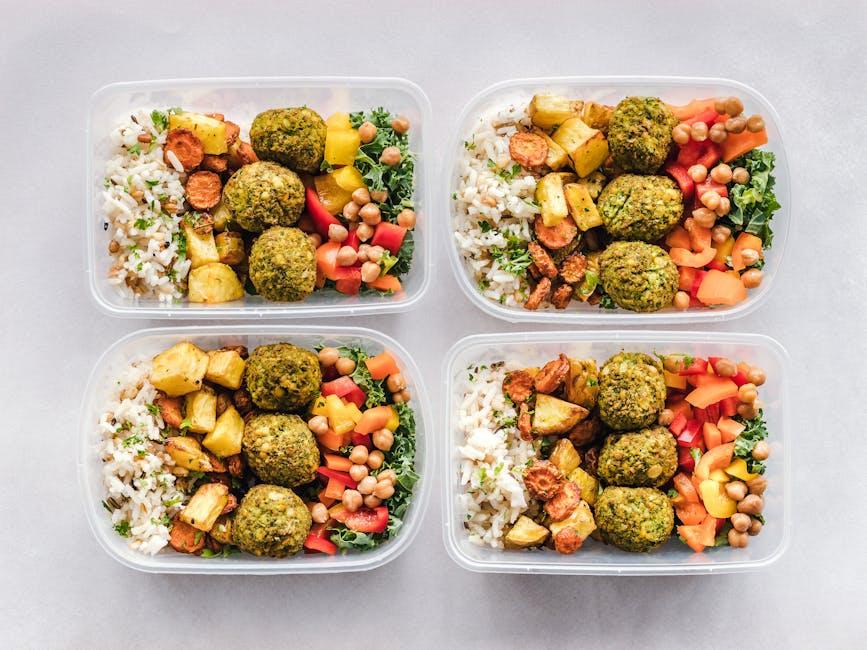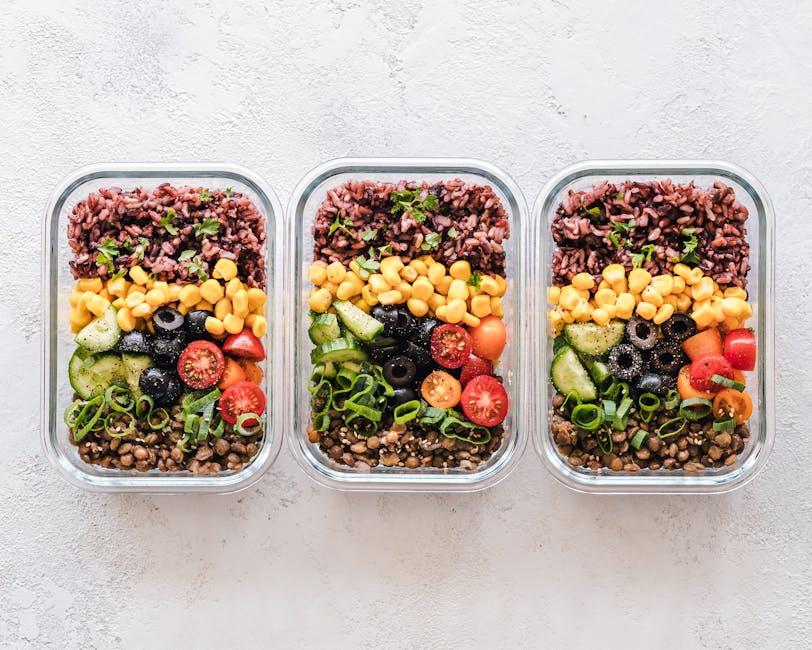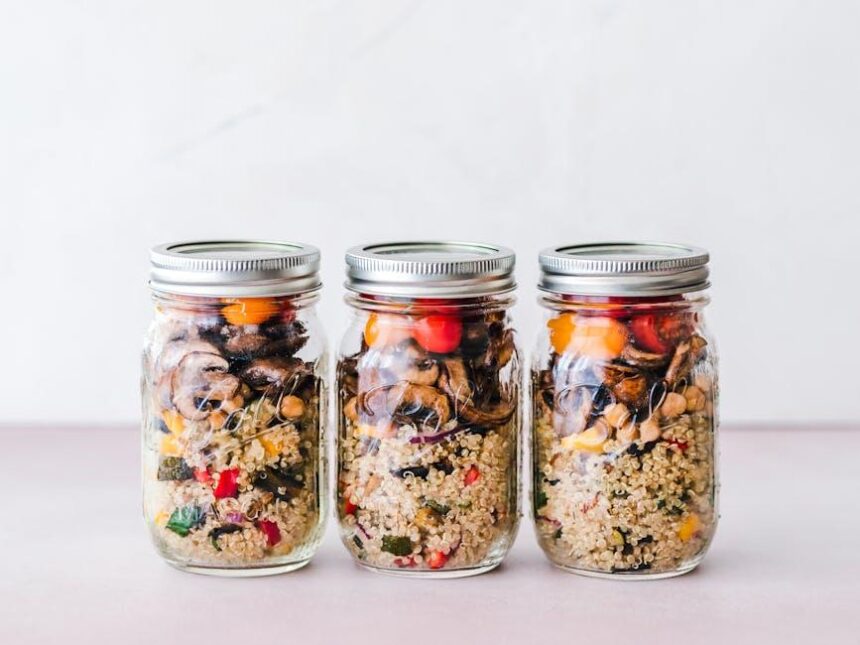In the ever-evolving landscape of modern eating habits, two distinct approaches emerge as contenders for the home cook’s allegiance: intuitive cooking and scheduled meals. One invites spontaneity, encouraging cooks to listen to their cravings, moods, and pantry invigoration; the other relies on structure, pre-planned menus, and the rhythmic cadence of clockwork dining. This exploration seeks to unravel the nuances of these contrasting culinary philosophies, weighing the freedom of intuition against the order of schedule-offering a fresh perspective on how we nourish not just our bodies, but our daily lives.
The Art of Intuitive Cooking Embracing Flexibility and Creativity in the Kitchen

When you shift away from rigid meal schedules, the kitchen transforms into a playground of flavors and possibilities. Embracing this fluid approach allows you to listen to your body’s needs, the whims of available ingredients, and the seasons’ bounty. Rather than following a strict recipe, intuitive cooking thrives on experimentation, encouraging you to:
- Trust your taste buds as your guide
- Adapt recipes based on mood and pantry contents
- Discover new flavor combinations organically
Such freedom fosters a deeper connection with food, turning daily meals into creative expressions rather than chores to tick off a list.
Despite its appeal, intuitive cooking requires balancing spontaneity with practical considerations. Scheduled meals offer predictability, aiding nutritional balance and time management, especially in busy households. Below is a simple comparison highlighting the essence of both approaches:
| Aspect | Intuitive Cooking | Scheduled Meals |
|---|---|---|
| Flexibility | High | Low to Moderate |
| Creativity | Encouraged | Limited |
| Time Efficiency | Variable | High |
| Nutritional Consistency | Variable | More Consistent |
Ultimately, these styles aren’t mutually exclusive but can complement each other beautifully, offering a harmonious blend of structure and spontaneity tailored to your lifestyle.
Unpacking the Science Behind Scheduled Meals Optimizing Nutrition and Routine

Understanding how meal timing affects our body’s metabolism reveals a fascinating synergy between science and daily habits. When we eat on a scheduled basis, our internal clocks-known scientifically as circadian rhythms-align with food intake, optimizing hormone release such as insulin and cortisol. This synchronization can enhance nutrient absorption and energy utilization, which contributes to improved digestion and metabolic health. Studies suggest that not only what we eat but when we eat plays a critical role in maintaining stable blood sugar levels and reducing the risk of chronic diseases like diabetes and cardiovascular disorders.
Additionally, scheduled meals foster consistency, which helps regulate appetite and reduces overeating. Consider some key benefits of this approach:
- Predictable energy distribution: Your body learns to expect fuel at certain times, improving mood and cognitive function.
- Enhanced nutrient partitioning: Optimized timing ensures nutrients are directed towards repair, storage, or immediate energy needs.
- Routine establishment: Creates a framework for balanced meals, helping avoid impulsive snacking or chronic caloric excess.
| Meal Timing | Hormonal Impact | Benefit |
|---|---|---|
| Breakfast (7-9 AM) | Boosted cortisol for alertness | Jumpstarts metabolism |
| Lunch (12-2 PM) | Stable insulin levels | Efficient nutrient absorption |
| Dinner (6-8 PM) | Lowered insulin + melatonin rise | Prepares body for rest and recovery |
Balancing Spontaneity and Structure Finding Harmony Between Intuitive and Planned Eating

Finding the sweet spot between intuitive cooking and scheduled meals is an art that respects both your body’s signals and the demands of a busy lifestyle. Spontaneity allows you to tap into your cravings, experiment with fresh ingredients, and create dishes that truly satisfy your momentary appetite. On the other hand, a bit of structure can prevent mealtime chaos, reduce food waste, and ensure balanced nutrition. Embracing a flexible framework lets you enjoy the freedom of impulsive culinary creations without sacrificing the benefits of thoughtful planning.
By blending the two approaches, you can craft a meal rhythm that supports your well-being and lifestyle. Consider using a simple weekly outline with room for improvisation within each meal. For example:
- Weekday evenings: Planned base ingredients (like grains or proteins) paired with spontaneous vegetable choices.
- Weekend cooking: Fully intuitive, letting cravings and in-the-moment inspiration lead the way.
- Snack times: Flexible, allowing a mix of prepped options and unplanned treats.
This balance encourages mindful eating without the pressure of rigid rules, ensuring your kitchen becomes a space for creativity and nourishment alike.
Practical Tips for Integrating Both Approaches Tailoring Your Meal Strategy to Lifestyle and Goals

Blending the spontaneity of intuitive cooking with the structure of scheduled meals can create a harmonious eating pattern tailored to your personal rhythms and objectives. Start by designating certain days or meals where you allow yourself the freedom to cook based on cravings and available ingredients-this cultivates a joyful connection with food. On other occasions, especially busier days, rely on a pre-planned schedule to maintain consistency and prevent impulsive choices that might derail your goals. This dual approach encourages flexibility while preserving balance, keeping your nutrition aligned with both your lifestyle and wellness targets.
Consider organizing your weekly meal plan using a simple table that identifies when to lean into structure and when to embrace improvisation. This visual guide can help manage energy levels, time constraints, and nutritional needs without feeling restrictive. For example:
| Day | Meal Approach | Focus |
|---|---|---|
| Monday | Scheduled | Protein-rich, Meal Prep |
| Wednesday | Intuitive | Seasonal Veggies & Cravings |
| Friday | Scheduled | Balanced Macros |
| Sunday | Intuitive | Creative Cooking & Experimentation |
- Stay mindful: Tune into hunger and satiety cues even during scheduled meals.
- Be adaptable: Allow room for adjustments if your daily routine or appetite changes.
- Keep it simple: Use batch cooking or leftovers to save time without sacrificing nutrition.
Wrapping Up
Whether you lean toward the free-flowing art of intuitive cooking or prefer the structured rhythm of scheduled meals, both approaches offer unique ways to nourish the body and soul. Intuitive cooking invites you to listen closely to your cravings and creativity, transforming mealtime into a personal canvas. Scheduled meals, on the other hand, provide a framework that can simplify planning and bring a comforting predictability to your day. Ultimately, the best path is one that suits your lifestyle, satisfies your palate, and supports your well-being-because in the kitchen, as in life, balance often holds the richest flavor.











